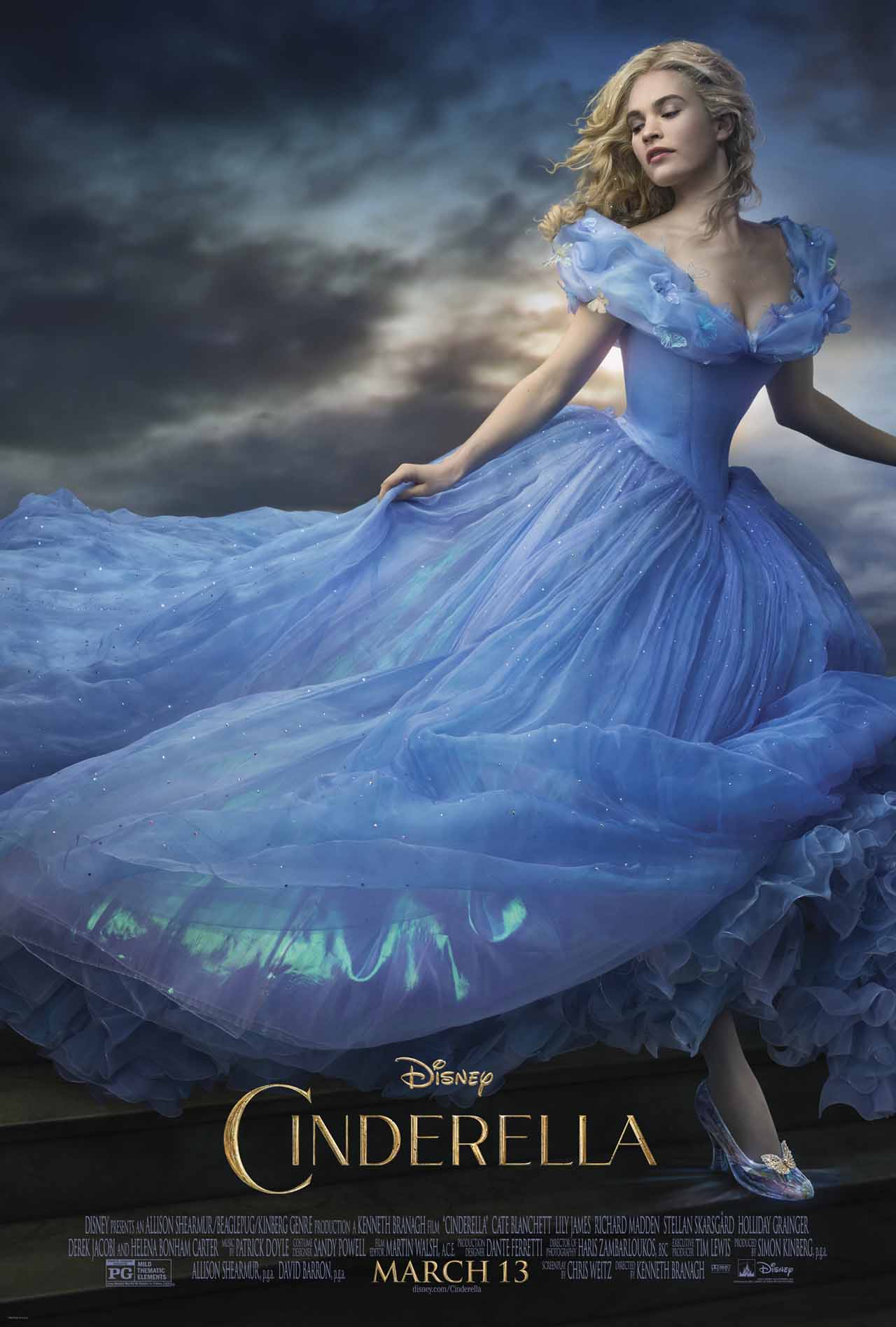I recently went to see Disney’s new live-actor movie Cinderella starring Lily James and Richard Madden. The costumes are beautiful and the sets sublime. The actors soon had me immersed in the story and I found myself identifying with the lovely Cinderella.
I started wondering why I love this story so much! I always love the fun and inner satisfaction of seeing a girl find her own sense of Self and power. Within this is an archetypal, universal story of transformation.
When we are born we have this wide-eyed enjoyment of the world we have been born into. There is just BEingness. We expect to be adored and love equally and unreservedly back! Ella is taught to believe in everything and trust in Love. Her perfect parents often say, “Have courage and be kind. Kindness makes nothing everything.”
As a child in real life, little by little, hurts and disappointments build up until one day the stars fall from our eyes and the perfect parents are not there any more. In fairy tales the metaphor is usually quite literal. In Cinderella’s case, first her mother, and then her father die.
Next, as in the lives of most adolescents, with the loss of perfect parents their peers become very influential. Ella feels vulnerable and grief-stricken at the loss of her father and she falls into a pattern of obedience, becoming subservient to the opinion of others and for awhile acts less than her true Self. The movie points out that names have power and thus it is that ‘Cinder’ella emerges.
Cate Blanchett plays the stepmother who is caught up in her sorry story about how her true love (first husband) died leaving her with her daughters, in grief and financially vulnerable. No matter what happens the stepmother can only see competition for her daughters in Ella’s beauty and loving-kindness, and a sense of separateness from the rest of the people in the Kingdom. She is cold and disapproving of her own daughters. Even the relationship between Cinderella and her father makes the stepmother jealous and unhappy.
The daughters are very immersed in acquiring beautiful things and outer experiences, perhaps to fill a void left by their emotionally unavailable mother and deceased father. So it must be that Cinderella is put down and made to serve in an attempt of her stepfamily to make themselves feel better.
This month Parvati Magazine is focused on MANIFESTING which I associate with “making the Magic happen”! The movie shows the freedom and strength Cinderella feels while out in Nature. She rescues a stag from the royal hunt and passionately pleas for its life with one of the men. (Who unbeknownst to her is the prince!) As they converse, she says that the biggest risk we can take is being ourselves.
And so it is that Cinderella finds her own rhythm. ‘Be the one who rescues you,’ she proclaims. Despite her rough home conditions she trusts in kindness, has faith in her dreams, and embraces what IS! When her fairy godmother changes a pumpkin into a carriage she climbs right in and goes to the ball!
Ah, you know the end of the story. The message in this version is to see the world not as it is, but as it could be, and believe in courage, kindness, and a little bit of magic! By listening to your heart (instead of what you perceive to be real with your mind) your dreams will come true.
“Have faith in your dream, and some day
Your rainbows will come sliding through.
No matter how your heart is grieving
If you don’t stop believing,
The dream that you wish will come true.”
Deborah Anderson lives in the High Park area of Toronto and has an art therapy studio there. When she’s not walking among the trees she sees people privately for art therapy, or in groups to art journal. “I believe that art and art-making lets your heart have a voice through the images and the meaning you associate with them.”
For more information about Deborah, please visit debbieandersonarttherapy.com.











